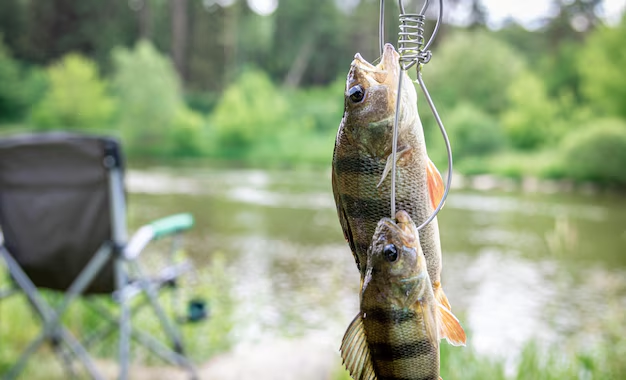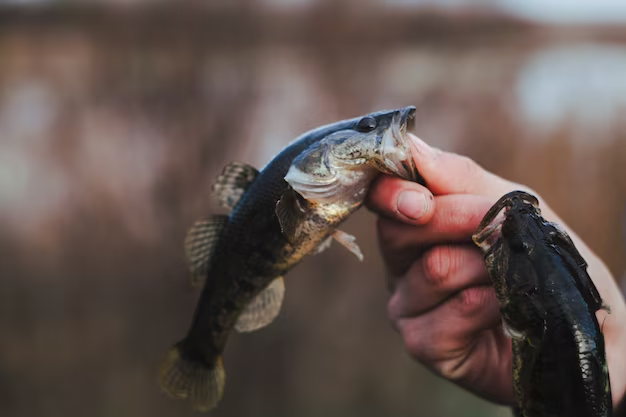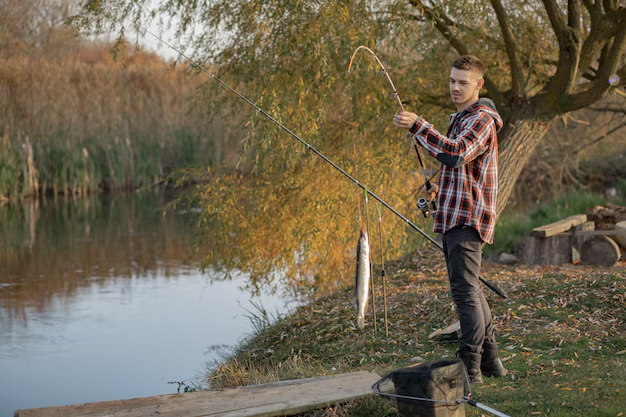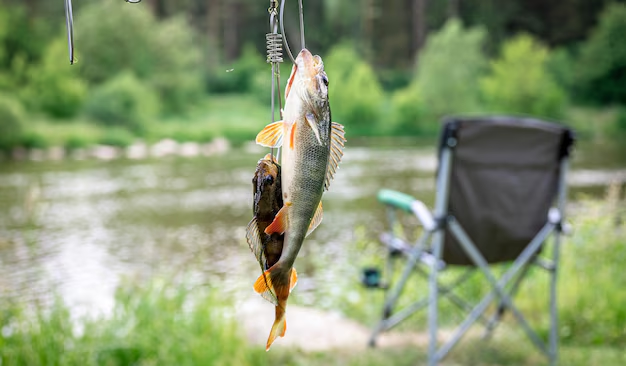A Complete Guide to Bass Fishing

Bass fishing is one of the most popular forms of freshwater fishing, enjoyed by millions of anglers worldwide. Whether you’re a beginner or a seasoned pro, there’s always something new to learn about this exciting and challenging sport. In this comprehensive guide, we’ll dive into the essential techniques, gear, and strategies you need to succeed in bass fishing.
What is Bass Fishing?
Bass fishing focuses on catching a variety of fish from the Micropterus genus, commonly known as bass. These fish are known for their aggressive strikes and acrobatic leaps, making them a favorite among anglers.
Why is Bass Fishing Popular?
Bass fishing is more than just a hobby—it’s a thrilling sport that provides both relaxation and adrenaline. Whether you’re fishing from a boat, a kayak, or the shore, the hunt for these powerful fish offers a rewarding experience.
Types of Bass Fish
Largemouth Bass
The largemouth bass is the most sought-after species. Known for its large mouth and aggressive nature, this fish is commonly found in lakes and ponds across North America.
Smallmouth Bass
Smallmouth bass prefer clearer, cooler waters such as rivers and streams. They may be smaller than their largemouth cousins but are just as feisty and challenging to catch.
Spotted Bass
Spotted bass are often confused with largemouth bass but can be distinguished by the small spots along their belly. They thrive in faster-moving waters and are known for their aggressive nature.

Best Locations for Bass Fishing
Lakes and Ponds
These calm bodies of water are ideal for bass fishing. Look for areas with submerged structures like rocks, logs, and vegetation, where bass like to hide.
Rivers and Streams
For smallmouth bass, rivers and streams are prime locations. Fish near the banks or in deeper pools where the current slows down.
Coastal Waters
In some areas, you can even find bass in brackish or coastal waters. These environments provide a unique fishing challenge for those looking to try something different.
Bass Fishing Seasons
Spring Bas Fishing
Spring is prime time for bass fishing. As water temperatures rise, bass become more active and move into shallower waters to spawn.
Summer Bas Fishing
In the heat of summer, bass tend to move to deeper, cooler waters. Early mornings and late evenings are the best times to fish during this season.
Fall Bass Fishing
Fall offers some of the best fishing as bass prepare for winter by feeding heavily. Look for them near cover, such as fallen trees or dense vegetation.
Winter Bass Fishing
Bass fishing in winter can be challenging, as bass become sluggish in colder waters. However, slow, methodical presentations can still entice bites.
Essential Bas Fishing Gear
Fishing Rods
A medium-heavy rod is versatile and works well for most bass fishing techniques. Look for a rod with good sensitivity to feel subtle strikes.
Fishing Reels
Spinning reels and baitcasting reels are both popular choices. Spinning reels are easier for beginners, while baitcasting reels offer more control for experienced anglers.
Fishing Line
Monofilament, fluorocarbon, and braided lines each have their advantages. For bass fishing, braided line is a good all-around option due to its strength and sensitivity.
Hooks and Lures
From plastic worms to crankbaits, having a variety of hooks and lures is essential. Each type of lure works best in different conditions, so it’s helpful to have a range of options.

<strong>Popular Lures for Bass Fishing
Plastic Worms
One of the most effective lures, plastic worms mimic the appearance of real worms and can be rigged in several ways.
Spinnerbaits
Spinnerbaits create vibration and flash, making them great for catching the attention of bass in murky waters.
Jigs
Jigs are ideal for fishing near heavy cover like weeds and rocks. They can be tipped with soft plastic baits to make them more enticing.
Crankbaits
Crankbaits mimic the appearance of small fish and are designed to dive to specific depths, making them perfect for targeting bass in deeper waters.
Techniques for Successful Bass Fishing
Casting Techniques
Learning how to cast accurately is crucial in bass fishing. Try casting near structures like docks, rocks, or vegetation where bass are likely hiding.
Jigging
Jigging involves a vertical, up-and-down motion that works well when fishing in deeper waters or when the bass are less active.
Trolling
Trolling involves slowly moving your boat while dragging a lure through the water. This technique is especially effective in larger bodies of water.
Best Time of Day for Bass Fishing
Early Morning
As the sun rises, bass become more active and feed in shallower waters. Early morning is a great time to fish, especially during warmer months.
Late Afternoon
As the day cools off, bass move back toward the shorelines to feed. This makes late afternoon another prime time for bass fishing.
Night Fishing
For the truly adventurous, night fishing for bass can be highly rewarding. Bass tend to feed more at night, especially during warmer weather.

</p>
Bass Fishing Tips for Beginners
How to Choose the Right Spot
Focus on areas with plenty of cover like weeds, logs, or docks. Bass love to hide and ambush their prey from these spots.
Understanding Bass Behavior
Bass are ambush predators. Knowing their feeding patterns and where they hide will improve your chances of catching them.
Patience and Persistence
Fishing requires patience. If you’re not having success in one spot, try moving to another area or switching up your lure.
Conservation and Catch-and-Release Practices
The Importance of Conservation
To ensure future generations can enjoy bass fishing, it’s important to practice conservation. This includes following local regulations and respecting natural habitats.
Proper Catch-and-Release Techniques
If you’re not keeping the fish, handle it with care and release it quickly to minimize stress and injury.</p>
Bass Fishing Tournaments
Overview of Bass Fishing Competitions</strong>
Bas fishing tournaments are exciting events where anglers compete to catch the largest or heaviest bass. These competitions can range from local events to national-level tournaments.</p>
<strong
>Famous Bass Fishing Tournaments
The Bassmaster Classic is one of the most prestigious bas fishing tournaments, drawing the best anglers from around the world.</p>
Bass Fishing Safety Tips
Water Safety
Always wear a life jacket when fishng from a boat or kayak, and be aware of your surroundings to avoid accidents.
Sun Protection
Spending hours on the water can lead to sunburn. Be sure to wear sunscreen, sunglasses, and a hat.
Equipment Handling
Be careful when handling sharp hooks and lures, and always keep your tackle organized to avoid injury.
Common Mistakes in Bas Fishing
Overcasting
Casting too far can cause you to miss out on prime fishing spots closer to the shore.
Using the Wrong Lure
Not every lure works in every situation. Experiment with different lures based on the conditions and the behavior of the bass.
Ignoring Weather Conditions
Bas fishing can be affected by weather. Cloudy days may lead to more aggressive feeding, while bright, sunny days can make bass more sluggish.
Bas Fishing in Different Weather Conditions
Fishing on Sunny Days
Bass tend to move to deeper water or seek shade during bright, sunny days. Focus on fishing near structures where they can find cover.
Fishing in the Rain
Rain can stir up the water, making bass more active. Don’t be afraid to fish during a light rain, as this can be an excellent time to catch bass.
Fishing During Windy Conditions
Wind can create waves and stir up food, making bass more likely to bite. Fish in areas where the wind is pushing water toward the shore.
Conclusion
Bass fishing is a rewarding and exciting sport that offers endless opportunities for improvement and learning. Whether you’re a beginner or a seasoned pro, understanding the habits of bass, using the right gear, and applying the proper techniques will help you succeed. Remember, patience and persistence are key. So grab your gear, hit the water, and enjoy the thrill of bas fishing!
Read Also: venus-webster-alabaster
FAQs
What is the best time of year to fish for bass?
Spring and fall are generally the best seasons for bas fishing, as the fish are more active during these times.
What is the best bait for bas fishing?
Plastic worms and crankbaits are popular choices, but the best bait can depend on the conditions and the type of bas.
How deep should I fish for bas?
The depth varies depending on the time of year and water temperature. In summer, bas may be found in deeper waters, while in spring and fall, they tend to stay in shallower areas.
Can I fish for bas at night?</strong>
<p>Yes, night fishing can be highly effective, especially in warmer months when bass are more active after dark.
Do weather conditions affect bas fishing?
Yes, weather can significantly impact bas behavior. Cloudy or rainy days often result in more active feeding, while sunny days may make bass more sluggish.